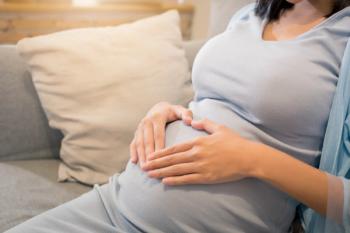
High rates of uncertainty about having children reported
A new study reveals that nearly half of women who want kids are uncertain they'll follow through, shedding light on the complex emotions behind declining birth rates.
While many women want children, half of these women are unsure if they will do so, according to a recent study published in Genus.1
Complex emotions behind fertility decisions
This data shows the complexity of women’s feelings toward having a baby amidst growing concerns about the decline of birth rates in the United States. Additionally, many women with a desire to have children indicated they would not be significantly bothered if they didn’t, highlighting a low intensity for the desire.
“People’s feelings about having children are complicated, and we found there are a lot of nuances,” said Sarah Hayford, PhD, MA, co-author and professor of sociology at The Ohio State University. “It suggests that there is no simple answer to the declining birth rate in the United States.”
Measuring uncertainty
Investigators assessed 3 types of uncertainty: goal uncertainty, realization uncertainty, and intensity of goals.2 The intensity of goals differs from goal uncertainty by focusing on the association between fertility goals and other childbearing attitudinal measures that influence fertility goals and behaviors.
Data was obtained from the National Survey of Family Growth (NSFG), which includes a broad range of fertility indicators and has utilized a continuous interviewing design since 2006. The desire for having a child is determined using the question, “If it were possible, would you, yourself, want to have (a/nother) baby at some time in the future?”
Women without a partner were asked about individual fertility desires, while those with a partner were asked about joint fertility desires. Responses included “yes” and “no,” while “don’t know” was not available as an answer.
Understanding fertility intentions
Another prompt in the NSFG offered respondents to describe what they and their partners intend to do. This question did not include direct instructions, and answers of “don’t know” were accepted and categorized as uncertain fertility intentions.
Those intending to have children were asked about their certainty, with responses including “very sure,” “somewhat sure,” and “not sure at all.” Additionally, they were asked how much it would bother them if they did not have any children, reported as a binary value of 1 for responses of not bothered or a little bothered, vs 0 for some bothered or a great deal bothered. This analysis was limited to childless women.
Additional analyses included how many additional children respondents intended to have and when they intended to have the next child. Covariates included age, parenthood status, partnership status, education, and household income.
Trends in fertility intentions
While fertility rates decreased during the Great Recession, the rates of women intending, not intending, or being unsure about having another child remained stable. The intention to have more children was reported in 62% of participants, vs not intending to in 35% and only a minority being unsure.
Investigators noted a decline in the proportion of childless women intending to have children after the Great Recession, from 84% in 2008 to 76% in 2018. Similarly, these rates were 74% and 68%, respectively, in unpartnered women and 82% and 78%, respectively, among younger women.
Growing realization uncertainty
Significant realization uncertainty was reported among the study population, with up to 50% being unsure whether they’ll have children. Additionally, 7% of women aged 15 to 44 years wanting more children were not sure whether they would follow through with this desire. The rate of “very sure” answers significantly declined in the 2018 sample, while “somewhat sure” answers were significantly more prevalent.
Certainty in having at least 1 child was reported in approximately two-thirds of childless women vs approximately half of women with at least 1 child intending to have another. “Very sure” answers were reported in 60% of childless women and 46% of mothers in 2002. In 2018, these rates were 52% and 50%, respectively.
Intensity of intentions
Rates of women with low intensity of intentions were high, at 18% among childless women in 2002 and 26% in 2018. Rates in 2002 were 17% among those aged 15 to 29 years vs 27% among those aged 30 to 34 years. In 2018, these rates were 26% and 25%, respectively.
A higher intended parity was reported in women with increased certainty about their intentions. An average of 2.4 more children were planned among women who were very sure about their intentions, vs 2.1 for those somewhat sure and 1.9 for those not sure at all. Overall, the data highlighted a significant rate of uncertainty in childbearing goals.
“On the one hand there is a lot of latent desire and intentions to have children. But people have a lot of uncertainty about whether they will meet those goals, and many don’t seem to worry that much if they do or don’t have children,” said Hayford. “It is hard to predict what will happen next.”1
References:
- Most women want children – but half are unsure if they will. June 18, 2025. Accessed June 24, 2025. https://www.eurekalert.org/news-releases/1088049.
- Badolato L, Hayford SR, Benjamin Guzzo K. Multiple dimensions of uncertainty in fertility goals: recent trends and patterns in the United States. Genus. 2025;81(14). doi:10.1186/s41118-025-00251-6
Newsletter
Get the latest clinical updates, case studies, and expert commentary in obstetric and gynecologic care. Sign up now to stay informed.











